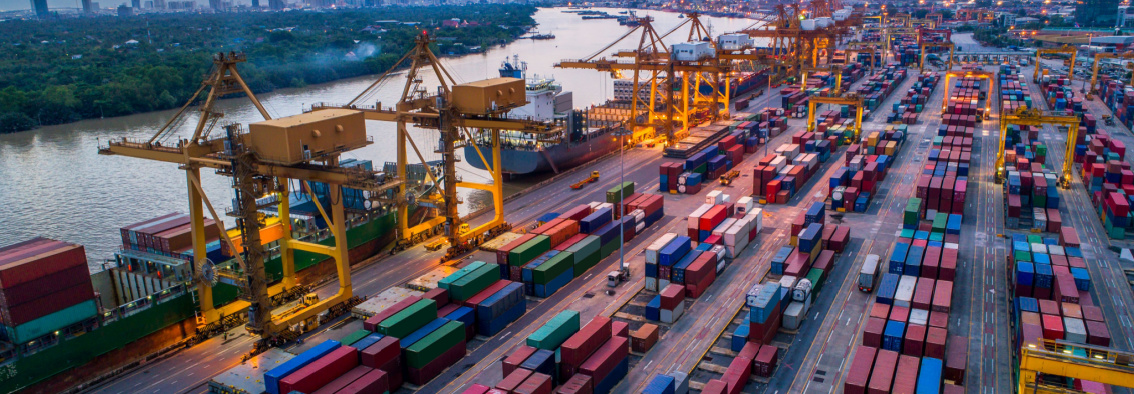There is widespread optimism for Taiwan’s economy in 2024. In a recent survey by the American Chamber Commerce in Taiwan, 81 percent expressed confidence in Taiwan’s economic growth outlook this year. Government agencies, think tanks, and international observers have all suggested that Taiwan’s economy could grow anywhere between 3 percent and 3.5 percent this year, thanks to an estimated increase of investment and exports.
There is also optimism to be had for economic growth to stabilize, now that many of the global disruptions from the pandemic have worn off. The supply chain issues created by conflict in the Red Sea are disruptive, but not to the scale that the pandemic caused. Businesses also expect cross-Strait relations to be less of an issue this year – even though the PRC may still react poorly to the inauguration of Taiwan’s President-Elect William Lai (賴清德) in May. But there is nothing to suggest that are any major changes in the offing this year for either Taiwan’s local economy, or its demand for new investment.
However, there appears to be an excess of optimism regarding the prospects for the growth of global trade this year. For Taiwan’s economy, of which the import and export of goods and services is equal to over 110 percent of GDP, the ebb and flow of trade is an important indicator. Taiwan’s economy will still grow at a steady rate in 2024—but not as quickly as some are predicting, because of a probable slowdown in trade.
Taiwan’s Economic Mix
The most common indicator for the health of any economy is its gross domestic product (GDP). While it is not a perfect indicator of economic welfare, GDP is an aggregate value of production in an economy during a period of time. For example, production can be measured quarterly (three months) or annually (12 months). The growth rate over time tells us whether an economy is growing or decreasing, and at what rate. For example, Taiwan’s annual GDP grew by 2.59 percent in 2022 and 1.4 percent in 2023. Both numbers show that Taiwan’s economy grew over both 2022 and 2023, but that growth was slower in 2023.
The main components of GDP, when measured by expenditures, are private and public (government) consumption, investment, and trade. Different economies have a different ratio of consumption to investment to trade. For example, US GDP is composed of roughly 68 percent private consumption, 18 percent private investment, and 17 percent public spending; and while the United States normally runs a trade deficit, total trade (imports plus exports) is equal to roughly 25 percent of GDP. For Taiwan, its GDP is 48 percent private consumption, 21 percent private investment, and 17 percent public spending, and total trade equal to 114 percent of GDP. These numbers show Taiwan’s economy relies a lot more on trade than does the economy of the United States—which makes sense, given Taiwan’s geographical limitations and the global demand for its exports like semiconductors and electronics.
Trade has also been one of the largest contributors to Taiwan’s economic growth these last five years. The value of imports and exports combined has increased over 19 percent from 2019 to 2023. The height of the pandemic (2021-2022) saw a significant expansion of trade—trade with some of its largest trading partners, in particular. Total trade between Taiwan and the United States increased 31 percent between 2020 and 2022. During that same time, total trade increased 19 percent with China, 24 percent with Hong Kong, 21 percent with Japan, and 34 percent with ASEAN. Prior to the pandemic, Taiwan’s annual growth in trade was negligible. And in 2023, we saw total trade starting to come back down to pre-pandemic levels.
Before the pandemic, Taiwan would average about USD $392 billion in exports and USD $322 billion in imports a year. In 2022, exports increased to USD $535 billion and imports to USD $441 billion. In 2023, exports decreased to USD $483 billion and imports to USD $390 billion—moving the total value of trade closer to the pre-pandemic average, but still elevated. Taiwan’s government is now estimating that exports and imports in 2024 will return to similar levels of trade as in 2022, with an estimated USD $523 billion in exports and USD $424 billion in imports—a nearly 10 percent increase.
Those overestimating Taiwan’s growth in trade this year may be overestimating global demand. If we look at the economies of Taiwan’s largest trading partners—the US, China, Japan, and Europe—we can see that growth in these economies is expected to be slower in 2024 as compared to 2023. US GDP in 2024 is expected to slow to 1.8 percent, down from 2.4 percent in 2023. Imports and exports are expected to grow a modest 1.1 percent, respectively. China’s GDP is expected to grow 4.6 percent, but this may also be an overestimate given the current state of China’s economy. Japan’s GDP is expected to grow by just 0.9 percent ,and Europe GDP to grow 1.2 percent. Even the more optimistic estimates for global demand this year are relatively moderate. The World Trade Organization (WTO) estimates that imports of goods by North America will grow just 2.2 percent, Asia by 5.5 percent, and Europe by 1.6 percent—thereby bucking the negative trend these countries saw last year in imports, but still not to the levels Taiwan would need to return to pandemic levels of trade.
The other main drivers of Taiwan’s economy, investment and consumption, both look positive in 2024. Of the companies surveyed by the American Chamber of Commerce in Taiwan, 92 percent of respondents said they plan to maintain or increase investments in Taiwan in 2024. And consumption will be helped by activities like increased tourism. Worldwide tourism is expected to return to pre-pandemic levels this year. Tourism to Taiwan in 2023 was still about 50 percent of what it was pre-pandemic—meaning that there is plenty of room for growth.
Economic issues were some of the leading factors in the recent election in Taiwan. Issues like housing costs and availability, wages, and increasing prices were all prevalent talking points amongst the three presidential candidates. Many of these issues now appear to have more positive prospects in 2024. Taiwan’s consumer price index (CPI), a common measure for the price of consumer goods, is expected to grow only 1.6 percent in 2024, down from 2.5 percent growth in 2023. Monthly earnings, while still slightly lower than inflation in November, were still some of the highest in recorded history. And as inflation comes down this year, this offers households the chance to spend or save more.
Geopolitical Costs Haven’t Disappeared
Macroeconomics will be the most influential driver of Taiwan’s economy in 2024, but geopolitical uncertainty is always a potential cost to Taiwan and the global economy. We have already seen Beijing implement several restrictions on trade with Taiwan ahead of the island’s January elections. The deployments of formations of naval vessels around Taiwan by China’s PLA have become more normal. And while there hasn’t been significant economic or military pressure out of Beijing since the election, there may very well be activity around the time of Lai’s inauguration in May.
Given Taiwan’s important position as a market for globally traded goods, it’s not just cross-Strait geopolitics, but also global politics, that Taiwan must be wary of. Certainly, geopolitics remain at the top of many people’s minds—and of the geopolitical risks for businesses, the US-China competition stands at the top of that list of concerns.
As the United States and China are two of Taiwan’s largest trading partners, what happens between those two countries affects Taiwan. It also affects the whole Indo-Pacific region. The Biden Administration has been working to build new financial, economic, and counter-narcotics dialogues between Washington and Beijing, and so the relationship between the two has been relatively cordial these last few months. But the US presidential election later this year brings a lot of uncertainty to the longevity of the current detente. It’s still too early to tell which party will win the White House, but an obvious difference between the potential Democrat and Republican nominees is how much uncertainty they bring to the US-China economic relationship. That being said, this is more a concern for 2025.
In fact, as we approach 2025, it is possible that the increasing uncertainty of American politics may incentivize greater trade and investment around the world, including with Taiwan. Companies may seek to build resiliency in their supply chains, as well as build inventories in the event that the United States might in the future either impose new tariffs on imports, or else unduly restrict certain investments by foreign companies.
Turning Economics into Politics
As the Lai Administration comes into power later this year, it will have to deal with the same problem the Tsai Administration has had to deal with these last eight years: staying in political power in the face of low economic growth. Since 2012, Taiwan’s annual GDP growth has been between 2 percent and 5 percent (except for 2021). In the 10 years prior, it was not uncommon to see annual GDP growth between 5 percent and 7 percent. Unfortunately, slowing growth is a common occurrence in developed economies in Asia (see Japan, South Korea, Hong Kong, and Singapore).
GDP is not always the best measure of economic welfare. GDP growth in 2024 is still likely to be positive—but it will not be as high as many are estimating. It will take more than waiting for global demand to pick back up if the Lai Administration wants a successful economy going into 2025.
The main point: Taiwan’s export-reliant economy is likely to grow at a modest but steady rate in 2024—but Taiwan’s economic growth is likely to fall short of more optimistic expectations, due to a probable slowdown in international trade this year. This will present challenges to the incoming administration of President-Elect William Lai as it faces the expectations of the electorate for more rapid economic growth.





